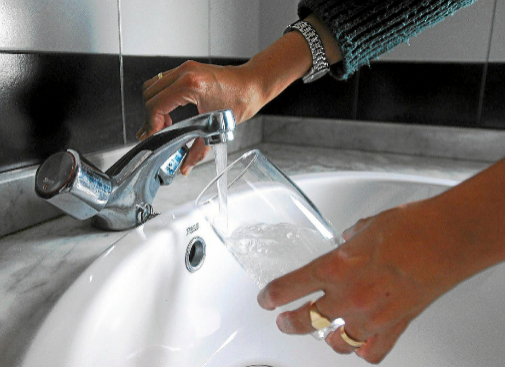- Consumption.The best and worst waters of our country
- Health: 5% of bladder tumors are associated with a contaminant in drinking water
- File Read all the recommendations of Boticaria García
We are facing one of the great questions of Humanity. Or rather, before one of the great dramas of the First World. Let's not forget that, according to UNICEF data, about 750 million people around the world do not have access to drinking water . Now it sounds distant, but according to the sustainable development goals of the United Nations, and if Greta Thunberg does not prevent it, by 2050 at least 25% of the world's population is expected to live in a country affected by a shortage of fresh water. I leave it there.
For now, in Spain we belong to that lucky 90% of the world's population with access to drinking water sources. Here the problems are others. In December, the Madrid Assembly approved a non-law proposal to try to encourage the consumption of tap water in hotels and restaurants. Unlike other communities, Madrid does not have to serve water jugs to establishments, but at least the recommendation is established. Something is something to avoid that awkward silence that is generated in some bars when a glass of tap water is requested.
But the joy has lasted little. A study has been published this month that relates trihalomethanes, a compound that is formed by chlorinating tap water to disinfect it, with bladder cancer. A new drama is served.
Can I have cancer from drinking tap water?
This study indicates that 5% cases of bladder cancer are caused by exposure to trihalomethanes . And since we all drink tap water sometime, alarms have been triggered. Do not panic! In the European Union the maximum limit of trihalomethanes is 100 micrograms per liter (µg / l), and luckily all countries comply with the regulations, with an average of 11.7 µg / l. Yes, Spain too, with an average of 28 µg / l. Before we go crazy with trihalomethanes, we should pay attention to other factors that have more weight in the development of cancer, such as alcohol and tobacco. It is absurd to be afraid of an innocent glass of drinking water while we continue to drink rods in the bar so quiet. In any case, if someone stays with the fly behind the ear, a small trick to eliminate the trihalomethanes is to let the water stand for half an hour to evaporate.
Is weak mineralization water healthier?
Once it is clear that drinking tap water is as safe as drinking mineral water, the next question is: is it healthier to drink bottled water? If we have been bombarded for years with the benefits of weak mineralization water, it will be for something, right?
Mineral water, which, incidentally, is not even all bottled water, is characterized in that its content in minerals or in trace elements is maintained at a constant concrete concentration. But this does not mean that it is healthier . In case someone thinks that with the weak mineralization water avoids the famous kidney stones, from the Spanish Urological Association they clarify: there is no scientific evidence that more mineral stones appear due to the mineralization of the natural mineral water or it implies the deterioration of the renal function. According to studies, in healthy people, the kidneys are able to balance water and electrolytes independently, regardless of the composition of food or water. In addition, the calcium and magnesium contained in mineral water are very bioavailable. That is, they are well absorbed. It is curious that we go crazy to buy calcium-enriched yogurts and milk ... and in turn we remove calcium from the water.
From 'raw water' to 'premium water': a fantasy world
I write fantasy but what I mean is nonsense. Because basically there are few things more ridiculous, and even dangerous, than wanting to reinvent the wheel with something as basic as water. About the fashion of drinking raw water among the technological gurus of Silicon Valley, I lack qualifications. These gentlemen who buy water without purification at six euros a liter will be experts in technology, but also lacking in common sense. In the raw water , where they hope to find energy and peace - publicity says - what they can find is deadly diseases . While they talk about raw water having probiotics (good bacteria), the reality is that some of the microorganisms we can find are the cause of cholera, dysentery, yellow fever or polio .
On the opposite side we have the famous water charts , with bottles of up to 400 euros that of course have not proven to be healthier . The biologist at the University of Castilla-La Mancha Rocío A. Baquero, a specialist in water quality, goes further and raises even if the concept of premium waters is ethical. Let's not forget that water is a basic element for life and since 2010 access to drinking water is recognized as a fundamental human right. Everyone who draws their conclusions.
Conclusions
Tap water is safe, bottled water has not proven to be healthier and the trendy waters are just that: fashions with no additional benefit. Drink water, whatever you want and what the body asks of you. We'll talk about this another day, because ... spoiler ! The norm of drinking two liters of water a day could be another myth.
According to the criteria of The Trust Project
Know more- Climate change
- nutrition
- Science and Health
- Greta Thunberg
- savings and consumption
United Kingdom The British police include the environmental group Extinction Rebellion in the list of "extremist ideologies"
Oceans Identify a growing mass of "extremely warm" water in the Pacific along with New Zealand
Climate crisis Australia's fires have already affected 480 million animals

